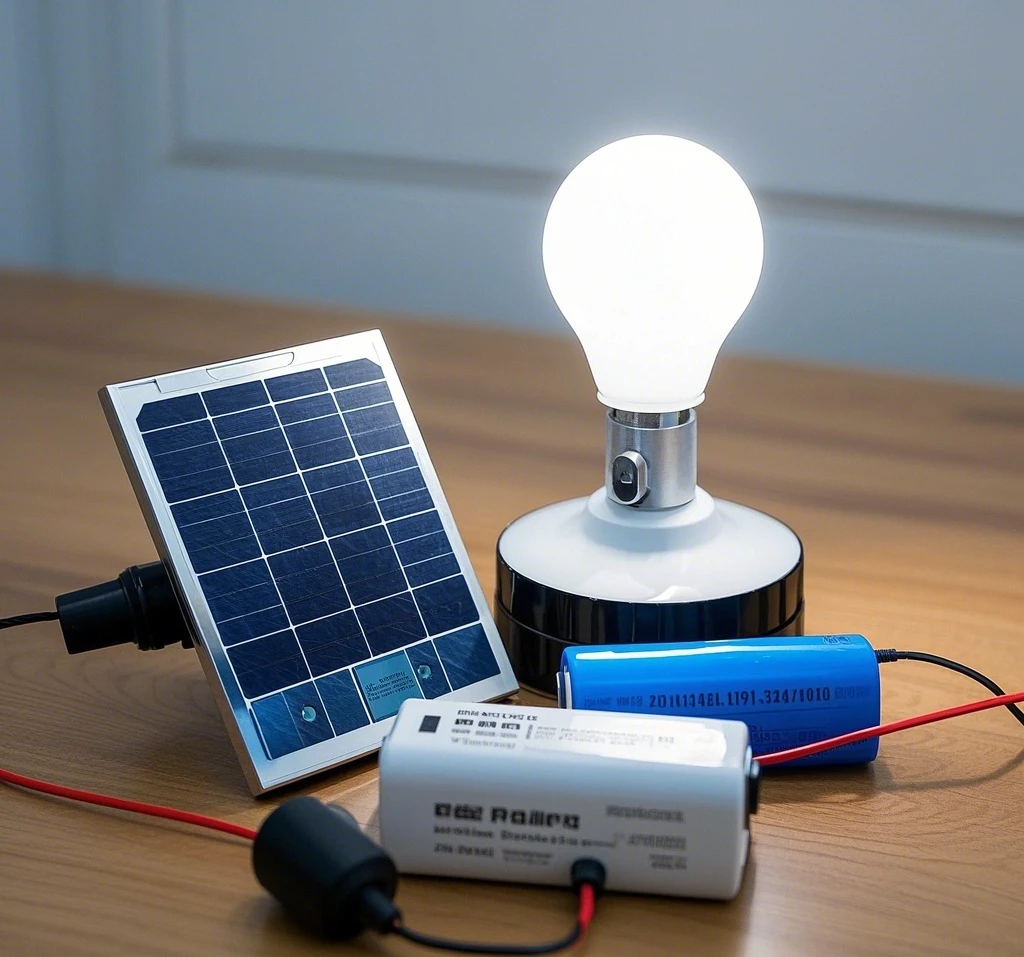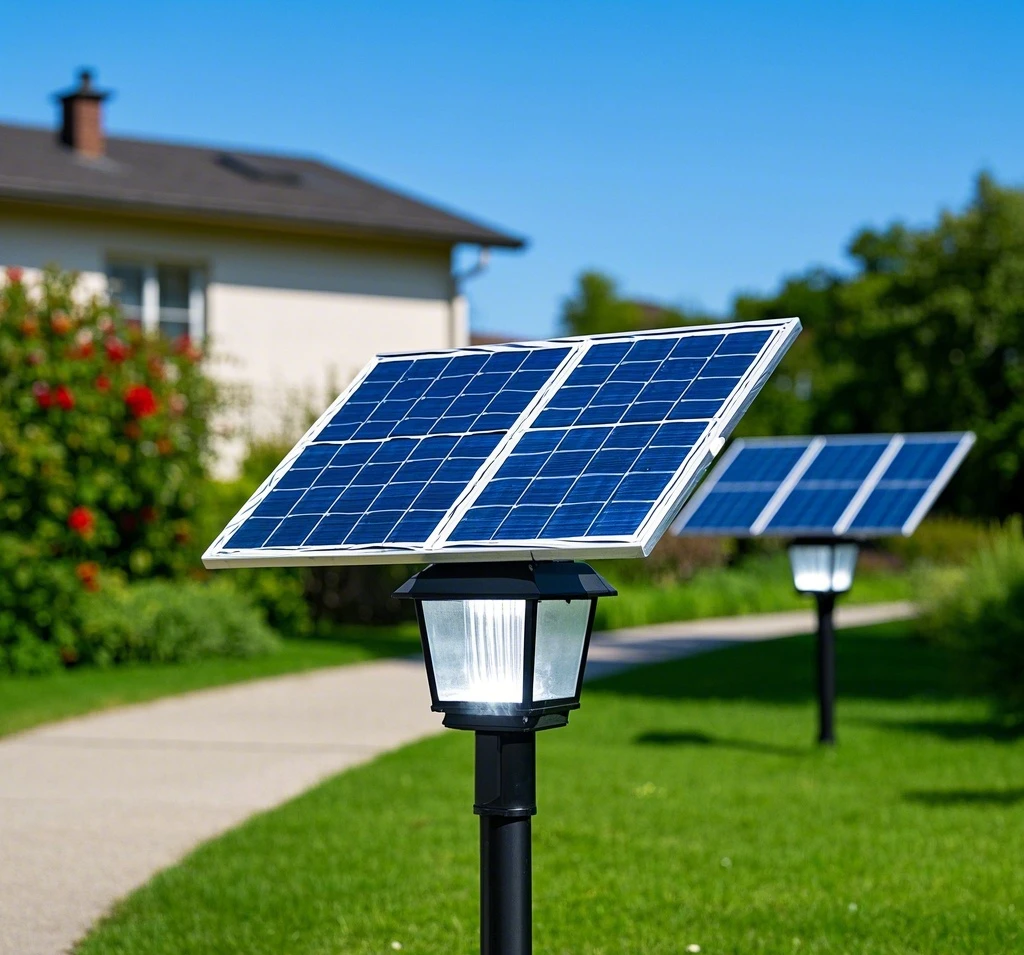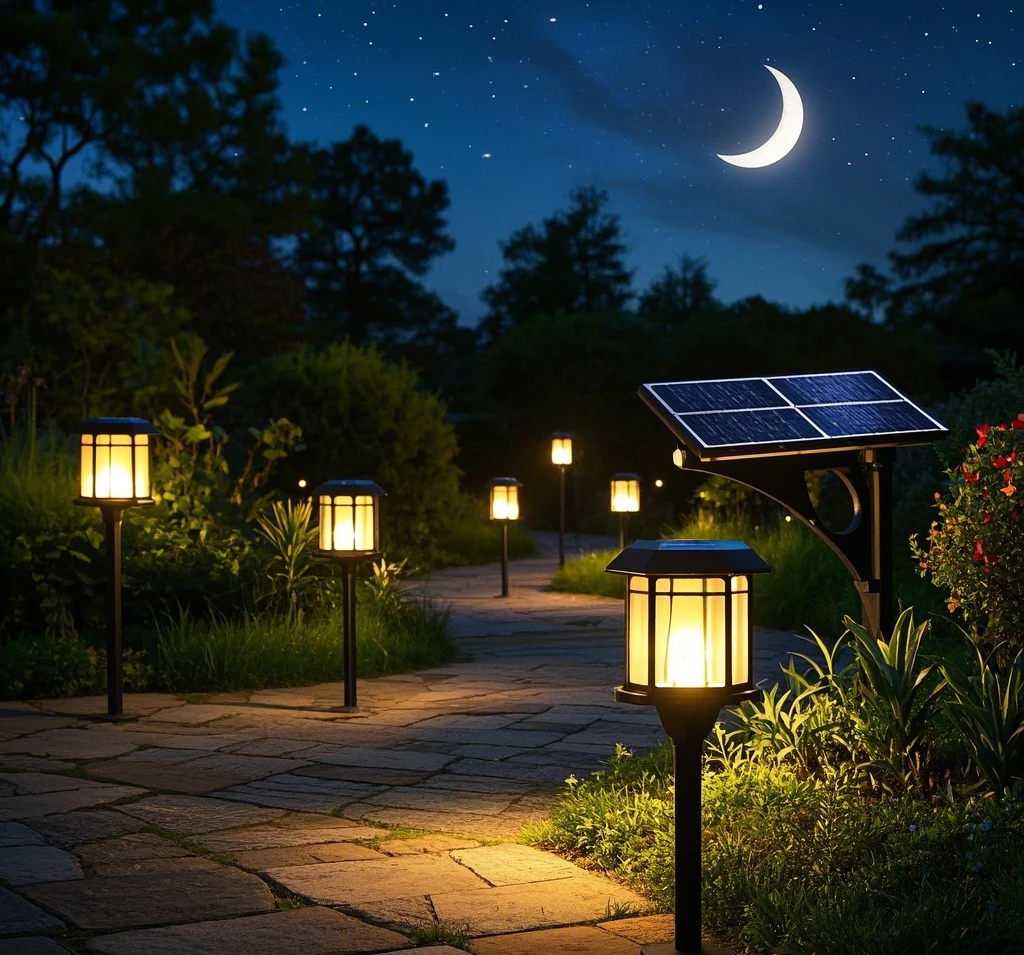Solar lights have become a staple in modern outdoor lighting, blending sustainability with convenience to brighten gardens, pathways, and patios worldwide. These ingenious devices tap into the sun’s endless energy, offering an eco-friendly alternative to traditional grid-powered lights. But how do solar lights work? This article takes you on a detailed journey through their mechanics, components, and benefits, unraveling the science that powers them in a clear and engaging way. By the end, you’ll not only understand their operation but also appreciate why they’re a smart choice for illuminating your world.
The beauty of solar lights lies in their ability to function independently, relying solely on renewable energy. This eliminates the need for complex wiring or costly electricity, making them both practical and planet-friendly. To grasp how they achieve this, we’ll explore their essential parts, the step-by-step process of converting sunlight into usable power, and the real-world advantages they bring. Whether you’re a homeowner curious about sustainable options or simply intrigued by solar technology, this guide has you covered with insights and answers.
The Building Blocks of Solar Lights

Every solar light is a miniature powerhouse, composed of several key components that work in harmony to capture and utilize solar energy. Understanding these parts is the first step to unlocking how the system operates.
At the core is the solar panel, often called a photovoltaic (PV) panel. This is where the magic begins, as it captures sunlight and transforms it into electricity. Made of silicon-based solar cells, the panel generates an electric current when photons from the sun strike its surface. The size and efficiency of the panel determine how much energy it can harvest, making it the foundation of the light’s performance.
Next comes the battery, the storage unit that holds the electricity produced during the day. Rechargeable batteries, such as nickel-metal hydride (NiMH) or lithium-ion, are commonly used due to their ability to store enough power for nighttime use. The battery’s capacity dictates how long the light can shine after sunset, so its quality is crucial for reliable operation.
The light source itself is typically an LED (light-emitting diode), prized for its efficiency and longevity. LEDs consume far less energy than traditional bulbs while delivering bright, consistent illumination. This makes them a perfect fit for solar lights, where maximizing power usage is key.
Finally, a controller or sensor ties the system together. Often equipped with a photocell, this component detects when daylight fades and triggers the LED to turn on. Some models include additional features like motion sensors or timers, adding flexibility to how the light functions. Together, these parts form a self-sufficient unit that powers itself through the sun.
How Sunlight Becomes Nighttime Glow

The process of turning sunlight into a glowing light is both fascinating and straightforward, rooted in the photovoltaic effect—a scientific principle that’s been lighting the way since its discovery. Let’s walk through how it all comes together.
It starts with the solar panel. When sunlight hits the silicon cells, it energizes electrons, setting them in motion to create direct current (DC) electricity. This conversion depends on factors like the intensity of the sunlight, the panel’s angle, and its overall quality. On a sunny day, the panel works at peak efficiency, soaking up as much energy as possible.
This electricity then flows into the battery for safekeeping. Throughout the day, the battery charges, storing energy for later use. Many solar lights include a charge controller to prevent overcharging, which protects the battery and extends its lifespan. By sunset, the battery is ready to take over.
As darkness falls, the photocell in the controller senses the change and activates the LED. The stored energy is released from the battery, powering the light for hours. Depending on the design, the light might run at a steady brightness or dim gradually to conserve power. This cycle repeats daily, with the sun recharging the system each morning.
What Influences Solar Light Performance
While the process is elegantly simple, several factors can affect how well solar lights perform in practice. Knowing these can help you get the most out of your setup.
Sunlight exposure tops the list. Solar panels need ample light—direct or indirect—to charge effectively. In shaded areas or during overcast weather, energy production may drop, leading to dimmer lights or shorter runtimes. Placing lights in a sunny spot is a simple fix to boost performance.
Component quality matters too. Premium solar lights with high-efficiency panels and robust batteries outperform budget models, especially in challenging conditions. While affordable options can suffice for basic needs, investing in durability pays off over time.
Seasons play a role as well. Summer’s long days provide plenty of charging time, while winter’s shorter, weaker sunlight can limit output. Some lights are built with larger batteries or adjustable settings to adapt to these shifts, ensuring year-round reliability.
Weather can also interfere. Rain, snow, or dust on the panel may reduce efficiency, though most solar lights are weather-resistant. A quick wipe-down of the panel now and then keeps it working optimally, especially in dusty climates.
Why Solar Lights Stand Out
Beyond their clever design, solar lights offer a host of benefits that make them a standout choice for lighting needs.
Cost savings are a major draw. By running on free solar energy, they cut electricity bills to zero. Though the upfront cost might be higher than traditional lights, the savings add up quickly, making them a budget-friendly option in the long run.
Ease of installation is another perk. No wires or electricians are required—just position the light where the sun can reach it. This plug-and-play simplicity suits everything from rural properties to temporary setups like campsites.
Environmentally, solar lights are a win. They reduce dependence on fossil fuels, lowering your carbon footprint. For anyone aiming to live greener, they’re a practical step toward sustainability.
They also boost safety and convenience. Automatic sensors mean they light up paths or yards without any effort, enhancing visibility and security. This hands-free operation is a game-changer for busy households.
Where Solar Lights Shine
The versatility of solar lights makes them a fit for countless scenarios. Garden stakes add charm and safety to walkways, glowing softly as night falls. Security lights with motion sensors deter unwanted visitors, while string lights create a cozy vibe for outdoor gatherings.
Innovation is pushing their boundaries further. Smart solar lights, manageable via apps, let you tweak settings from afar. Integration with home systems and improved battery tech are making them more powerful and user-friendly, hinting at an even brighter future.
Clearing Up Questions and Myths
Newcomers to solar lighting often have questions. Do they work in winter? Yes, though performance may dip with less sunlight. Is maintenance a hassle? Not really—just occasional cleaning and battery swaps every few years. Are they bright enough? Modern LEDs pack plenty of punch for most uses.
Some myths persist too. Many think solar lights need constant sun to work, but they can charge with diffuse light, functioning in varied climates. Another misconception is unreliability—yet with proper care and placement, they’re a dependable choice.
Wrapping Up the Solar Story
Solar lights are a testament to how simple science can solve everyday needs. From panels capturing sunlight to LEDs casting a glow, they turn renewable energy into practical illumination. They save money, simplify setup, and support the planet, all while lighting up our lives effortlessly.
As advances roll in, solar lights will only get better, offering more power and possibilities. For now, they stand as a brilliant example of sustainable innovation—proof that the sun’s energy can light our way forward, one night at a time.


Leave a Reply